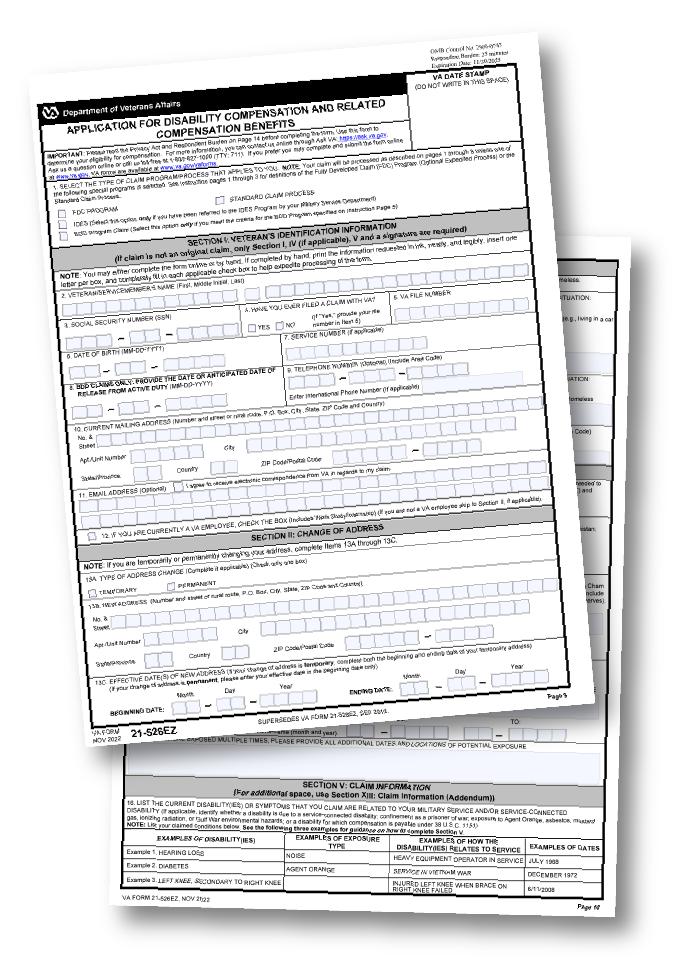Veterans face a lot of challenges when they return home from service. It can be hard to readjust, and some health conditions are downright debilitating. Hyperacusis is one of those conditions, and veterans need to understand what their options are when it comes to VA disability. Today, we are discussing exactly that, how veterans can get the help they need by receiving the help they deserve through a VA disability rating.
The Department of Veterans Affairs system can often feel as difficult to deal with as a combat zone. It’s a complicated process, and unfortunately, Hyperacusis VA Disability is not as straightforward as filing other conditions.
What Exactly Is Hyperacusis?

Hyperacusis is a hearing disorder that makes it difficult to tolerate everyday sounds. This occurs because the ears and brain have difficulty processing specific sound frequencies at a normal tolerance. Imagine attending a concert, except every instrument is amplified to an unbearable level.
Now imagine experiencing that level of sensitivity in regular settings like grocery stores, restaurants, or during conversations. As you can imagine, Hyperacusis can have a serious impact on your quality of life, relationships, work, and well-being.
Causes and Symptoms
Exposure to loud noises is often a culprit in hearing loss. But many veterans may not realize their experiences may have caused Hyperacusis as well. Loud noises from being near a blast, using firearms, or even operating heavy equipment on a daily basis contribute significantly. However, it’s not always directly related to exposure.

Veterans can also develop Hyperacusis as a secondary condition due to things like traumatic brain injury (TBI), ear infections, and even Bell’s palsy. Identifying it early on can play a crucial role in seeking effective treatment options, so be aware of common symptoms. Some of these symptoms include increased sensitivity to sounds that others don’t notice, pain or discomfort even at relatively low sound levels, and feeling a pressure sensation in the ears. Other symptoms you should be aware of are muscle contractions and avoiding social situations or crowded places due to sound sensitivity.
If you recognize these symptoms in yourself or a loved one, consider speaking with a hearing specialist or physician right away. Prompt attention can make a significant difference. This also helps if and when a nexus letter for VA Disability is required as there will be medical documentation that supports the timeline of symptoms.
Is There a Specific Rating for Hyperacusis?
Although hyperacusis isn’t recognized as a stand-alone disability by the VA, there is a path forward: service-connecting to other conditions that are caused or aggravated by hyperacusis. These are conditions for which veterans can be rated by the VA. This is what’s known as a secondary condition.

Here are just a few of those possible conditions veterans have filed a successful secondary service-connected VA disability claim for:
- Tinnitus (Diagnostic Code 6260)
- Post-Traumatic Stress Disorder (PTSD) (§ 4.130 Schedule of ratings—Mental disorders)
- Headaches (2024 study)
- Traumatic Brain Injury
While approximately 1.4 million veterans received compensation for hearing loss in the fiscal year of 2022, remember those 1.4 million veterans likely experienced debilitating side effects. Hyperacusis was a large factor in many of these cases.
How Secondary Conditions Work for Hyperacusis VA Disability
Imagine your service-connected tinnitus is like static on a radio. The hyperacusis acts as a volume knob, amplifying those already bothersome sensations. Essentially, a pre-existing condition worsens or changes due to the effects of Hyperacusis.
To have the best outcome in these cases, be sure you always use competent medical professionals that can accurately link back the condition. Your medical records are very important to support your claim.
Steps for Filing a Claim
Veterans need to know exactly how to file these types of VA disability claims. Always remember the key components. Below are steps that are involved:

1. Gather Evidence – This includes a formal diagnosis from a qualified healthcare professional and documentation from your service records.

2. File VA Form 21-526EZ – This form, an original claim for service connection, must be filled out thoroughly and correctly to prevent delays in your claim.

3. Establish Medical Nexus – The nexus is the most important factor here. This must clearly show how the condition was caused or worsened by the primary, service-connected disability. Medical opinions, buddy letters from your service, or lay statements are great tools in this instance.
Keep in mind; this is just an overview of how secondary service-connected claims work. Always consult with accredited professionals familiar with veterans’ disability cases. Also, know there is no set rating formula for hyperacusis itself.
Navigating the VA System with Hyperacusis
Remember that I told you dealing with Hyperacusis VA Disability can be a bit like navigating enemy territory? Well, that’s because things rarely go smoothly, even for deserving veterans who served our country. That’s why having a knowledgeable guide is absolutely critical. An accredited representative can help you gather the necessary information for your claim, such as an in-service event or your personnel records.
Where to Turn for Help
You don’t have to go through this process alone. There are many qualified individuals and organizations ready to help. If you’re struggling, here are some organizations you can contact for support:
- Veterans Service Organizations (VSOs)
- The American Tinnitus Association: (https://www.ata.org)
- The Hyperacusis Network (https://hyperacusis.net/)
C&P Exams and Gathering Medical Evidence
As I mentioned earlier, you need a current medical diagnosis for the condition affecting you because of Hyperacusis VA Disability. Be sure you have everything for your C&P exam, including:

Complete Medical History: Detailing pre-service, in-service, and post-service health records related to hearing and conditions possibly linked to hyperacusis, should be easy to understand and in chronological order.

Service Treatment Records: Highlight instances during your service involving loud noises, head trauma, or any other factors that could be relevant, like time in combat zones or MOS job code that correlates with significant noise exposure.
Having a thorough, detailed paper trail is the only way you’re going to get the benefits you deserve for Hyperacusis VA Disability. You’ll want to make sure you keep copies of everything, too. It’s a good idea to provide your healthcare providers and VA care providers with the same information. This will help ensure that everyone is on the same page and working together to get you the best possible outcome.
FAQs About Hyperacusis VA Disability

1. Can you get disability for hyperacusis?
Technically no, because the VA doesn’t assign a disability rating directly to Hyperacusis. It’s better to think of it in terms of an increased rating. But veterans can file claims for other conditions directly caused by it, and if approved, those would each have their own individual ratings. It requires linking to already diagnosed, service-connected issues.
2. How bad can Hyperacusis get?
In some instances, daily life can become a struggle due to how debilitating sounds become for veterans. Those affected might experience sharp pains in the ears with common, everyday noises. This leads to avoiding social interaction, experiencing difficulties concentrating on even simple tasks, or job loss, due to an inability to function in regular settings. This can also lead to other conditions, such as Meniere’s disease, ringing/buzzing, and social isolation. It makes living a fulfilling life quite a challenge.
3. How do you test for Hyperacusis?
An audiologist typically will perform sound tests to determine how your ears react to various sounds at different frequencies. These tests help doctors determine how sensitive your hearing is. You’ll be given very specific instructions to follow. Just be honest about how you’re reacting to sounds as it occurs because an accurate diagnosis is critical in moving forward.
4. What is the resource for hyperacusis?
Several fantastic resources are dedicated to this complex condition. But one that stands out the most is the Hyperacusis Network (https://hyperacusis.net/). They offer veterans access to numerous online support forums and an abundance of educational materials dedicated to this specific diagnosis. It can be a great place to find additional compensation and benefits for your condition.
Conclusion
I know this can all feel a little overwhelming. And filing VA claims is complex, particularly for conditions indirectly addressed like Hyperacusis VA Disability. But know this: your service and wellbeing matter. So, don’t hesitate to ask for help if you’re struggling.



This Post Has One Comment
Pingback: Prostate Cancer as VA Disability Benefits and Compensation